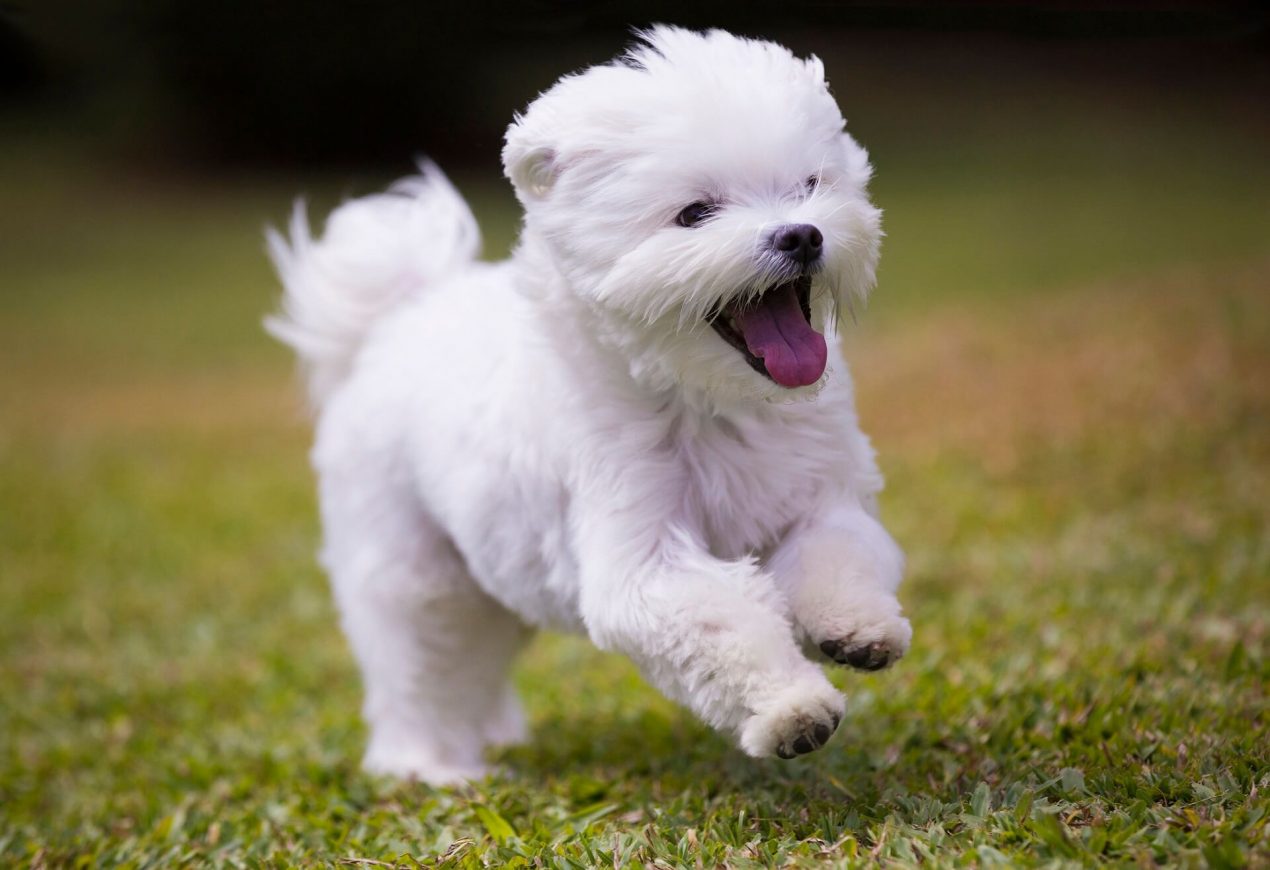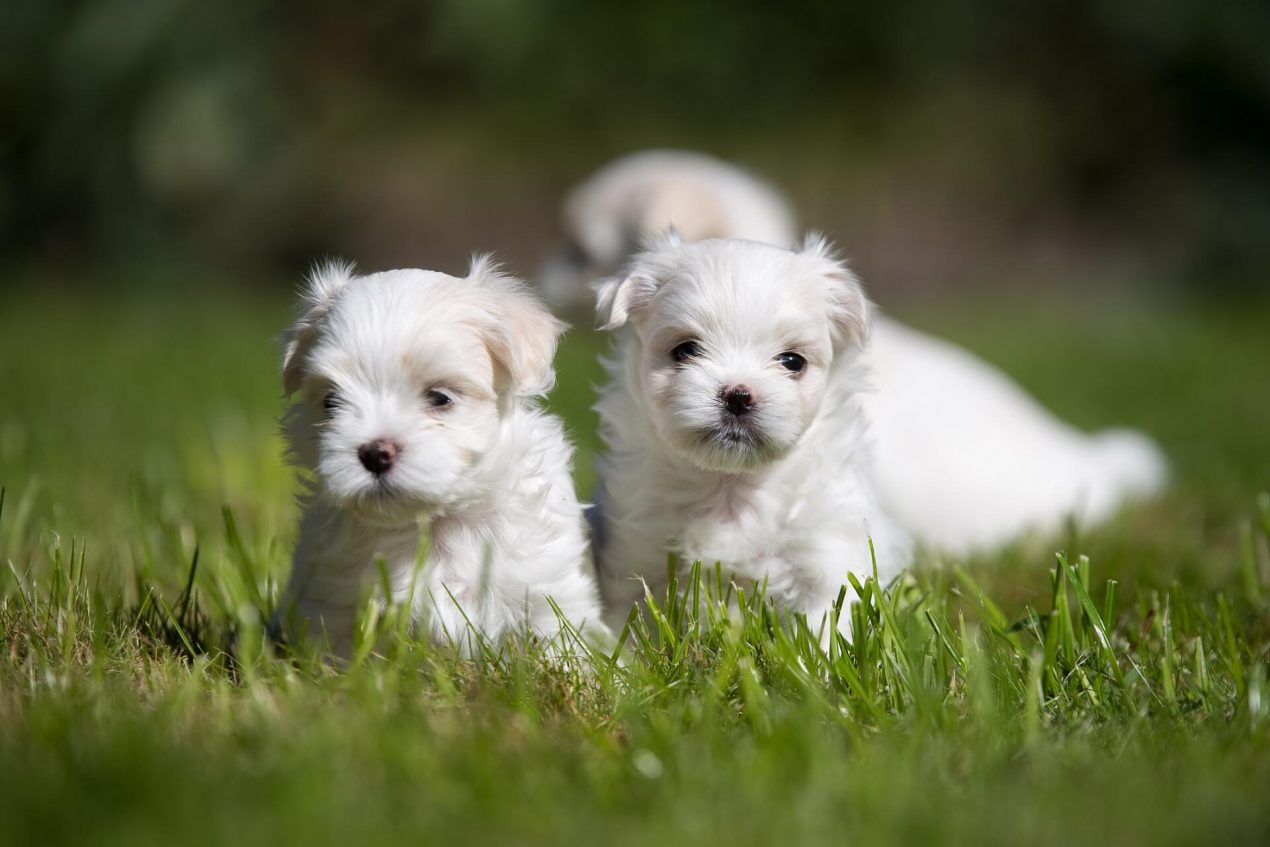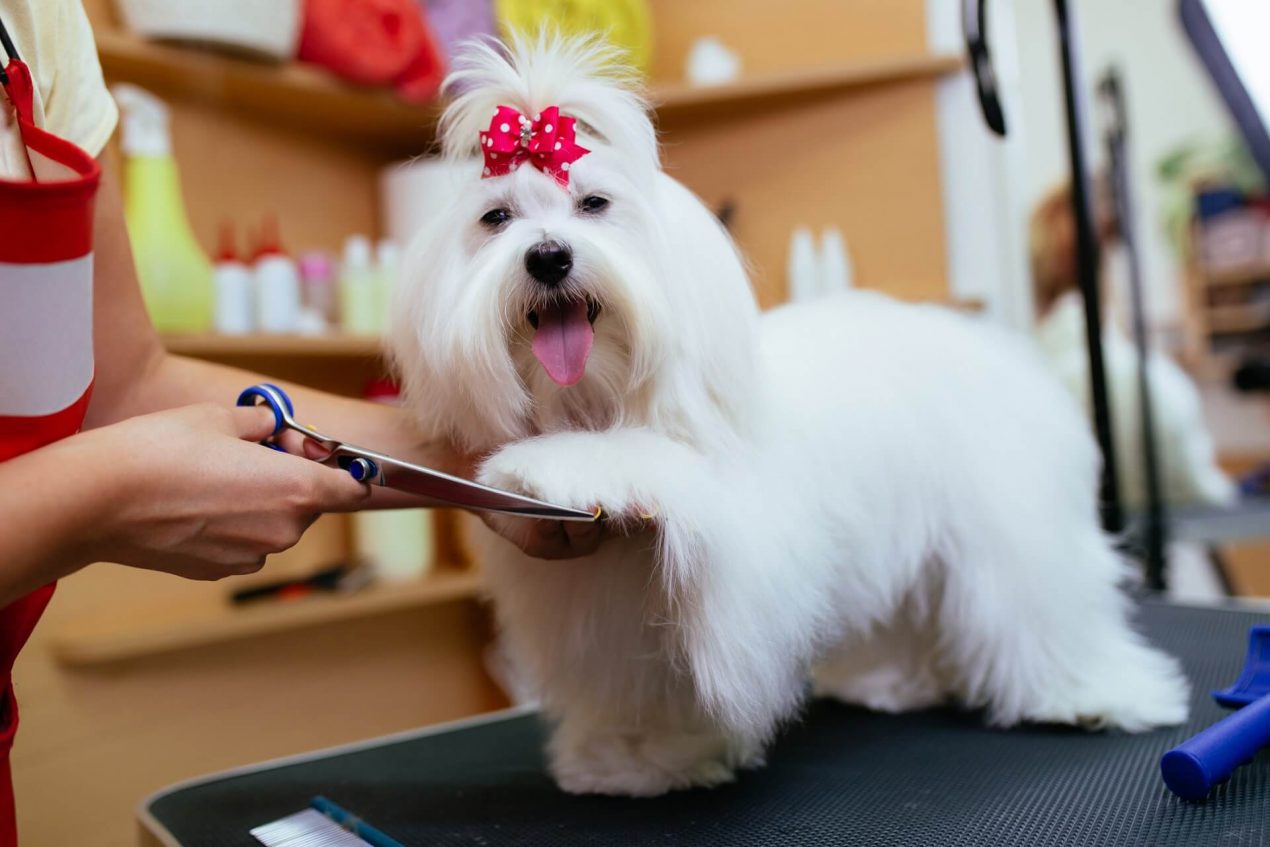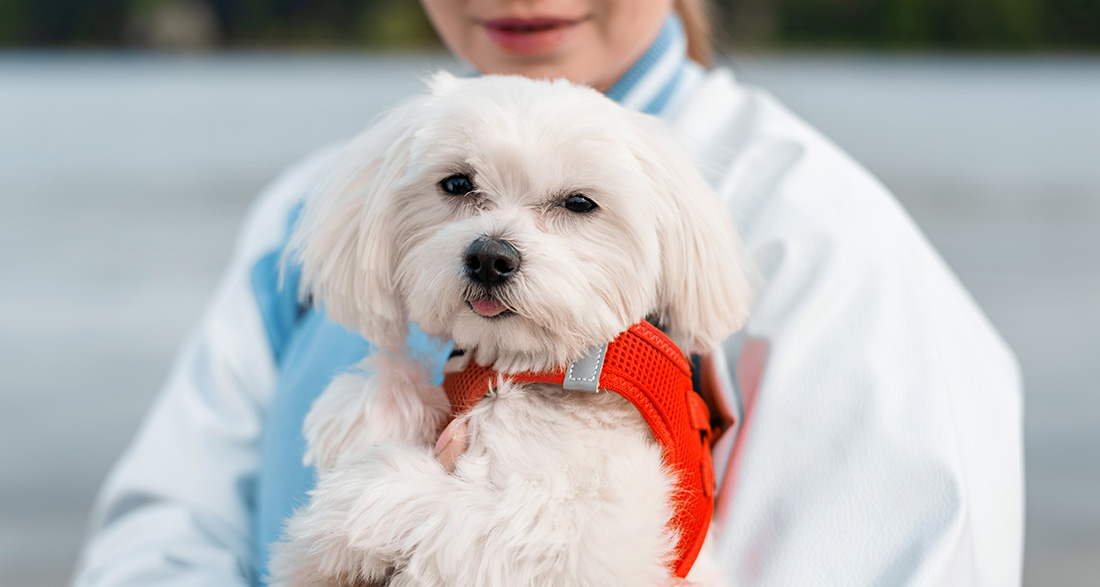The loyal gaze, plush fur, and lovable nature make the Maltese a wonderful companion dog. Here you will learn what distinguishes and makes the Maltese breed so unique.
History of the Maltese
The Maltese is one of the oldest dog breeds and has been a popular companion dog for centuries. Its exact origin is not clear. According to tradition, Phoenician sailors discovered similar dogs on the island of Malta around 1500 BC. However, the name does not trace back to the island of Malta but rather to the Semitic word “Màlat,” meaning refuge or harbor, suggesting that the breed’s ancestors lived in the ports and coastal areas of the central Mediterranean. These dogs primarily served to control rats and mice.
In the Renaissance of the 15th and 16th centuries, these dogs finally became society dogs for the noble circles. The white, small dogs were particularly popular among ladies. British Queen Victoria, as well as the French queens Marie Antoinette and Joséphine Bonaparte, were admirers of the breed. The Maltese is also among the first dogs publicly presented at dog shows. They were first shown in the United Kingdom in 1862 and shortly thereafter in the United States in 1877. Today, the breed belongs to the FCI Group 9, Companion and Toy Dogs, Section 1.1, “Bichons and Related Breeds.” The small companion dog remains a popular breed worldwide.
Breed Overview
GROUP: Toy
HEIGHT: 7 to 9 inches
WEIGHT: Under 7 pounds
TEMPERAMENT: Affectionate, alert, fearless
COAT: Long, silky
COAT COLOR: White, black points
HYPOALLERGENIC: Yes
LIFE SPAN: 12 to 15 years
Nature and Character
The Maltese is a cheerful and affectionate family dog that enjoys going on exploratory adventures. This adventurous dog is always ready to play and makes a great everyday companion. The fluffy dogs can easily play under supervision with children. With their affectionate nature, they require a lot of attention and affection to be happy. They prefer to follow their owner everywhere, which is not a problem due to their size and gentle nature. They are shy and reserved towards strangers.
These small, spirited dogs are confident and show no fear towards much larger dogs. Well-socialized, they get along easily with other dogs, cats, or small animals. While they have a relatively weak hunting instinct, their curiosity allows them to follow scent trails easily. They want to be taken seriously as dogs and become unhappy when not sufficiently engaged. Nevertheless, these friendly and lively dogs are suitable for beginners.

Appearance of the Maltese
The black button eyes and the cute snub nose surrounded by radiant white fur melt the hearts of dog lovers. Despite its small size of 20 to 25 centimeters and a weight of up to 4 kilograms, the Maltese is a real eye-catcher. The small dog with a elongated body appears very elegant and carries its head proudly. The long and soft fur is usually pure white but can also be ivory-colored. If the fur is allowed to grow long, it parts on the back and almost reaches the ground.
The breed is easily confused with other breeds by laypeople. Although they all descend from a common type of dog, many variations of the Bichon have developed over the centuries. Many laypeople often mistake them for the also white Coton de Tuléar. However, the Maltese is smaller and has smooth fur. It is also easily confused with the curly-haired Bichon Frisé from Tenerife, the Italian Bolognese, or the multicolored Havanese.
Puppy Training
The aggressive and unruly behavior of some representatives of the breed is often attributed to a lack of training, given its image as a lapdog. With non-violent and loving training, the Maltese develops into a great everyday partner. You don’t need special knowledge or experience to train this eager-to-learn dog. If it’s your first dog, seek help from a dog school. Don’t be swayed by the cute puppy eyes; clearly show the dog what is allowed and what is not. Giving in once can lead to dealing with bad habits throughout the dog’s life. What the dog is allowed to do as a puppy, it will continue into adulthood. However, these small dogs are generally friendly and eager to please their owners. Early socialization and getting them used to strangers, people, and animals are crucial for successfully navigating daily life together.

Activities with the Maltese
Maltese may be small and cute, but they are no different from other breeds in needing extensive walks, playtime, and other activities. These intelligent dogs love exploring their surroundings and following interesting scents. Search games with small treats bring immense joy to the little furball. They also enjoy playing and frolicking with balls and other throwing toys. With patience and consistency, these four-legged friends learn tricks and perform feats.
Without enough stimulation, the energetic dog may become a barker or start destroying the furnishings. Despite appearances, the Maltese is a real dog that appreciates any form of activity. If you want to engage your dog on a professional level, consider participating in dog sports with them. However, be careful not to overexert them, but you can try small exercises in agility or dog dance.
Health and Genetic Diseases
Common health problems that can affect Maltese dogs include eye issues such as tear duct stenosis and cataracts. They are also prone to dental problems like tartar and gum disease, so regular dental care is essential. Another health risk is the so-called “White Shaker Syndrome,” a neurological disorder that causes trembling and muscle spasms.
Because the Maltese is a small breed, they may also suffer from patellar luxation (dislocation of the kneecap). Recognizing signs of discomfort or pain in our dog and seeking veterinary help immediately when needed is crucial.
To minimize the risk of genetic diseases, it is essential to choose a reputable breeder who prioritizes the health and genetics of their dogs. Regular veterinary check-ups and a balanced diet are also important to promote the health of our Maltese. By caring for our dog lovingly and identifying potential problems early, we can ensure that our Maltese leads a long and happy life.
Like many small dogs, this breed is prone to patellar luxations, the painful displacement of the kneecap. The best prevention here is avoiding overweight and providing regular exercise to strengthen the stabilizing muscles around the knees.
Maltese Care
Due to its long fur, the Maltese requires special coat care. The easiest option is to keep the coat in a short cut, requiring the dog to be groomed every two to three months. With practice, you can perform this task yourself. If you choose to let the dog’s fur grow, it should be brushed once a day to prevent matting. For proper care, it is advisable to introduce your dog to this daily ritual from a young age.
Regular brushing is essential to prevent matting and knots in the fur. It is recommended to brush the coat daily to remove loose hair and keep it shiny and well-groomed. It is also important to keep the eyes and ears of your Maltese clean to avoid infections. Gentle cleaning with a damp cloth is usually sufficient.
Since the fur on the head is particularly long, some individuals of the breed may be prone to eye inflammations. Although the fur appears dense, it is not suitable for protecting against cold. As they lack an undercoat, Maltese should not be left outside for too long in cold temperatures, and you may consider putting a coat on them, but not a costume.
Dental care is another important aspect of Maltese care. Due to their tendency for dental problems, regular teeth brushing is essential to prevent tartar buildup and gum diseases. Regular veterinary check-ups should also be conducted to monitor the overall health of your Maltese.

Is the Maltese Suitable for Me?
Before getting a Maltese, you should be aware that you are not acquiring a pure lapdog. Like any other dog, this breed needs regular walks and stimulation. If you don’t have time for this, you should refrain from getting a dog. Due to its small size, the Maltese can be kept in smaller apartments as long as it gets enough exercise outside. A significant advantage of the breed compared to other long-haired dogs is its nearly odorless fur and lack of shedding.
If you decide on this breed, look for a reputable breeder, preferably one affiliated with a registered club and experienced in breeding. Here, you can follow the development of your puppy from the beginning until it joins your family. A purebred puppy with vaccinations and a health check costs between 1,000 and 1,500 dollars. With luck, you may find a gentle Maltese or a mixed breed looking for a new home through animal shelters. Here, you only pay a small adoption fee and do a good deed at the same time.
Interesting and Worth Knowing
- The Maltese was already popular among nobles and celebrities in antiquity, and this has not changed over the years. True icons like Marilyn Monroe, Frank Sinatra, and Elvis Presley owned a representative of the breed. Today’s celebrities like Ashton Kutcher, Halle Berry, and Desperate Housewives star Eva Longoria also own one or more adorable Maltis.
- Many celebrities were photographed with a small Maltese named Lucky Diamond. She even received an entry in the Guinness Book of World Records as the most photographed animal with celebrities. The beautiful Maltese lady had an impressive 363 photos with actors, presidents, singers, billionaires, and other glamorous personalities.
- The richest dog ever to live was the Maltese lady named “Trouble.” In 2007, she inherited a proud twelve million dollars from her owner Leona Helmsley. For the rest of her dog life, she could reside in an upscale hotel in Florida and crossed the rainbow bridge in 2010 at the age of twelve.
Do you have a Maltese or are you considering getting one? Tell me in the comments what makes them special in your opinion!
Frequently Asked Questions
Is the Maltese hypoallergenic?
Yes, the Maltese dog is known to be hypoallergenic, meaning it is suitable for many allergy sufferers.
Do Maltese require a lot of exercise?
Although they are small, Maltese need adequate exercise to stay healthy. Regular walks and playful activities are recommended.
Are Maltese easy to train?
Yes, Maltese are intelligent dogs and respond well to positive training and loving consistency.
Do Maltese shed a lot?
No, Maltese are a non-shedding breed, meaning they only shed minimally.
Can Maltese live in apartments?
Yes, due to their small size and adaptability, Maltese are ideal for living in apartments and small spaces.


